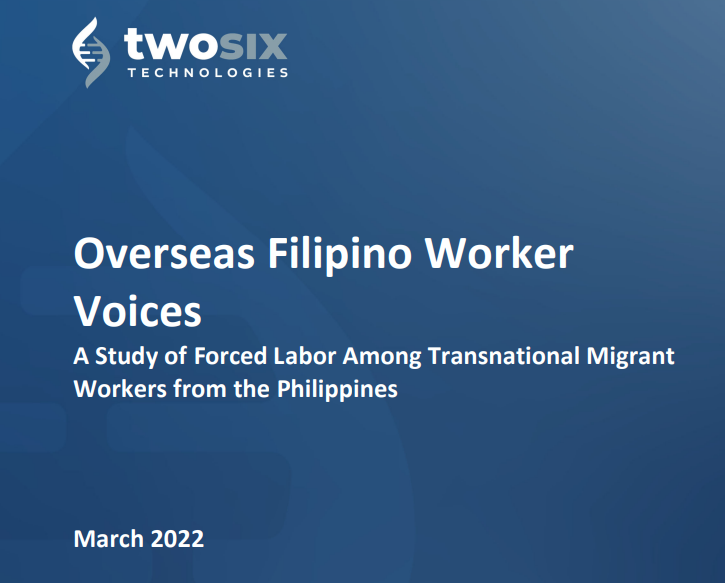Overseas labor migration has been a feature of the Filipino economy for over a century. Over the last thirty years, overseas labor migration has become an increasingly important part of the country’s economy, reducing unemployment and strengthening US dollar reserves. However, many Overseas Filipino Workers’ (OFW) working arrangements—particularly those employed as domestic workers (DWs) or in occupations viewed as “low‐skilled” —are often subject to unethical recruitment mechanisms, deceptive hiring practices, and forced labor conditions after arriving in the receiving country. This situation has been exacerbated by the profound economic, public health, and other impacts of the COVID‐19 pandemic, which have caused uncertainty, skyrocketing unemployment, and large‐scale repatriation among migrant workers globally. This study sought to determine the pathways leading to forced labor/trafficking in persons (TIP) and the distribution of forced labor indicators among samples of OFWs in several destination countries and industries. The researchers registered 7,526 unique and eligible participants and gathered data surrounding the labor experiences of 6,085 registered OFWs. In concert with GFEMS, the University of Philippines Centre International de Formation des Autorités et Leaders (CIFAL), and grantee organizations including the Fair Employment Foundation (FEF), Two Six Technologies (TST) implemented this multi‐cohort survey effort and examined the occurrence, distribution and dimensions of labor exploitation among study participants in three distinct study cohorts.

Overseas Filipino Worker Voices: A Study of Forced Labor Among Transnational Migrant Workers from the Philippines-Two Six Technologies, 2022
DOWNLOAD
